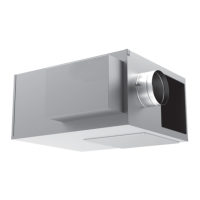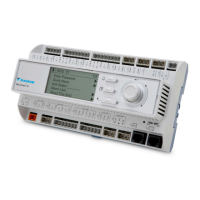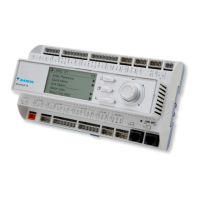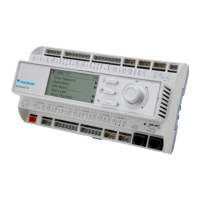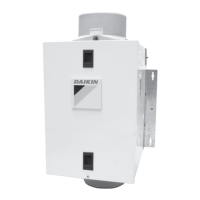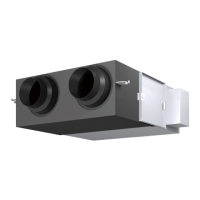OM 1280-2 • MICROTECH UNIT CONTROLLER 32 www.DaikinApplied.com
Table 14: Setpoint Calculation Examples
Example A – Stand-Alone Unit, No remote sensor, No network communication
Given
Occupancy Mode = Occupied and Unit Mode = Heat
Space Temp Setpoint = (not used)
Setpoint Shift = (not used) = 0.0°F
OHS = 69.8°F
= 69.8°F + 0.0°F + 0.0°F + 0.0°F = 69.8°F
Example B – Stand-Alone Unit, Remote sensor with 55ºF – 95ºF Setpoint, No network communication
Given
Occupancy Mode = Occupied and Unit Mode = Heat
Space Temp Setpoint = 71.0°F (from remote sensor)
Setpoint Shift = (not used) = 0.0°F
OCS = 75.0°F, OHS = 70.0°F
Example C – Stand-Alone Unit, Remote sensor with +/- 5°F, BACnet network communication
Given
Occupancy Mode = Occupied and Unit Mode = Heat
Space Temp Setpoint = 71.0°F (from network input)
Setpoint Shift = (from network input) = -2.0°F
OCS = 74.0°F, OHS = 68.0°F
Proportional Integral (PI) Control Loops
The MicroTech UVC uses PI-loop control for heating, cooling
and ventilation processes within the unit ventilator. Numerous
PI algorithms can be used depending upon the unit ventilator
Table 15: PI Loop List
PI loops Setpoint
Feedback
(controlled variable)
Output
PI-1 Single Zone VAV Fan Control Temperature Fan Speed
PI-2 Economizer / Free Cooling Discharge Air Temperature Position the OA Damper
PI-3 Modulating Cooling Valve Discharge Air Temperature Modulating Cooling Valve Position
PI-4 Modulating Hot Water Valve Discharge Air Temperature Modulating Hot Water Valve Position
PI-5 Face and Bypass Damper Discharge Air Temperature Face and Bypass Damper Position
PI-6
CO
2
/ Demand Control
Ventilation
2
Setpoint Space CO
2
Position the OA Damper
PI-7 DAT Low Limit
Setpoint
Discharge Air Temperature Position the OA Damper
PI-8 Electric Heat Discharge Air Temperature Electric Heat Stage
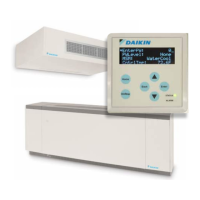
